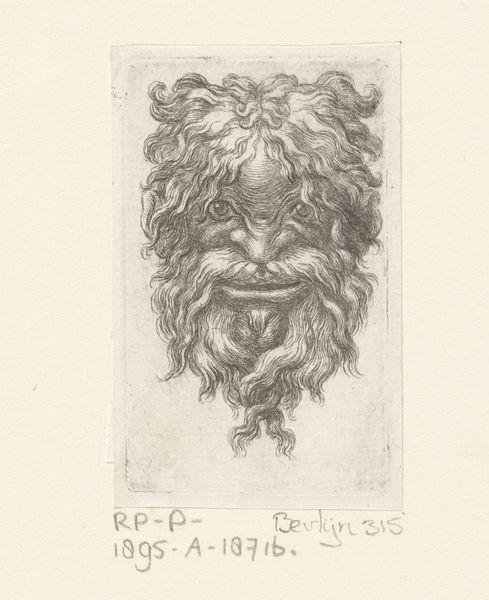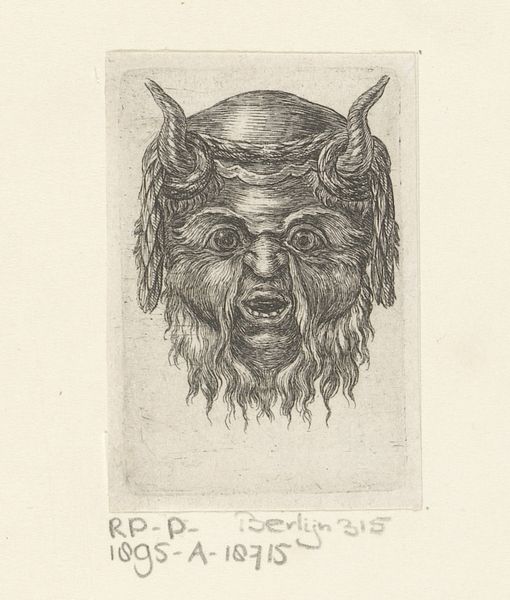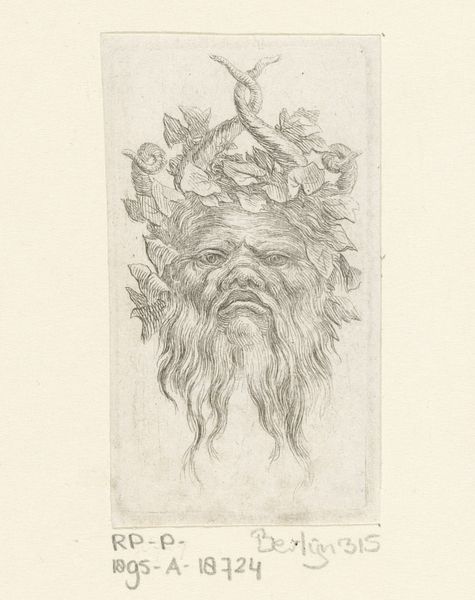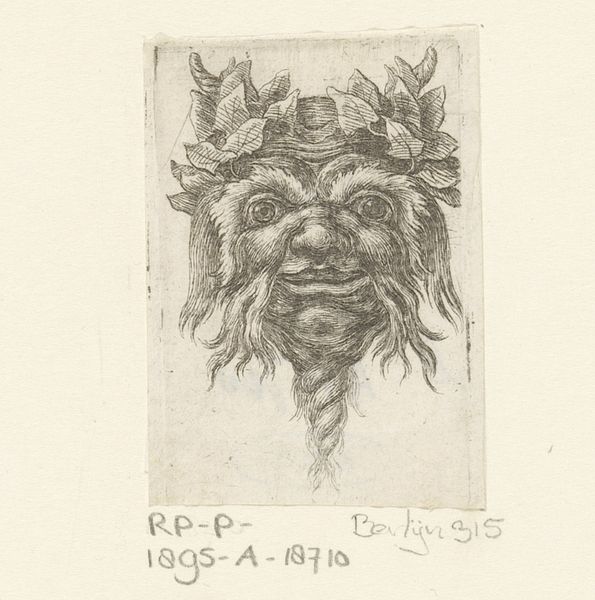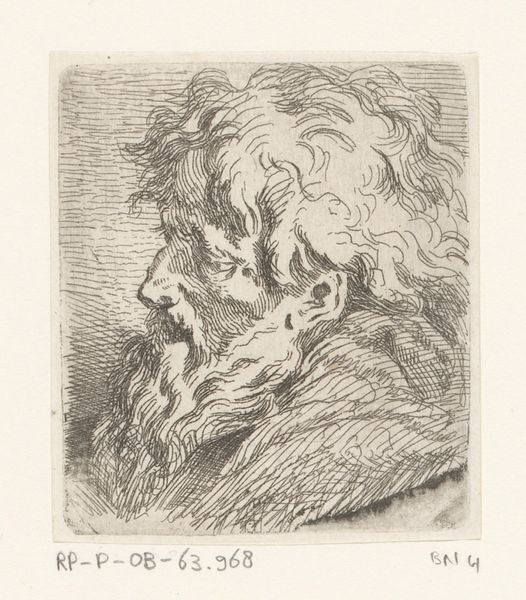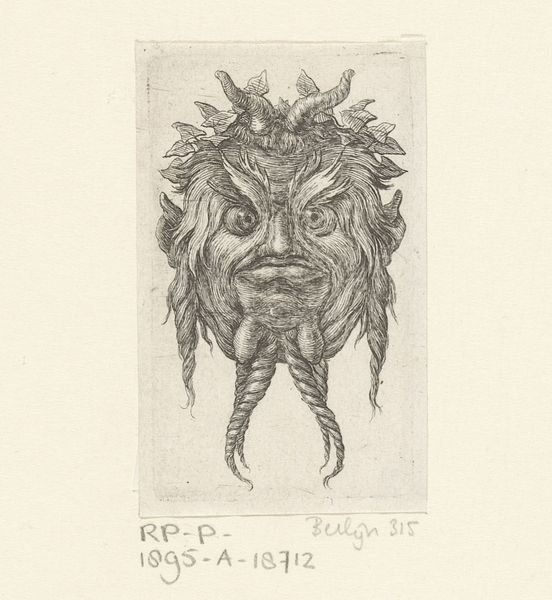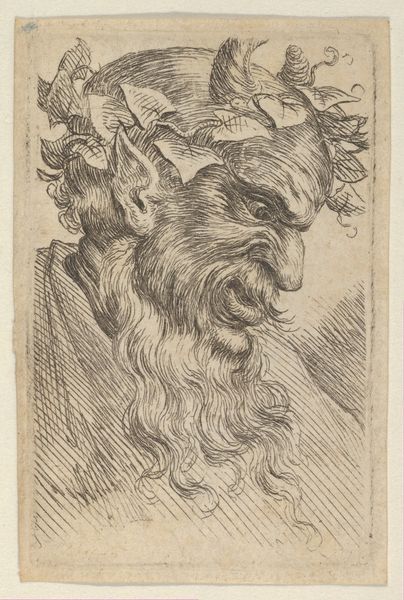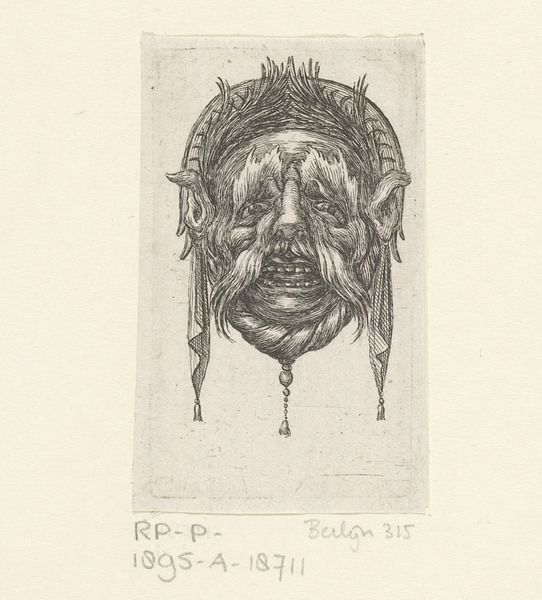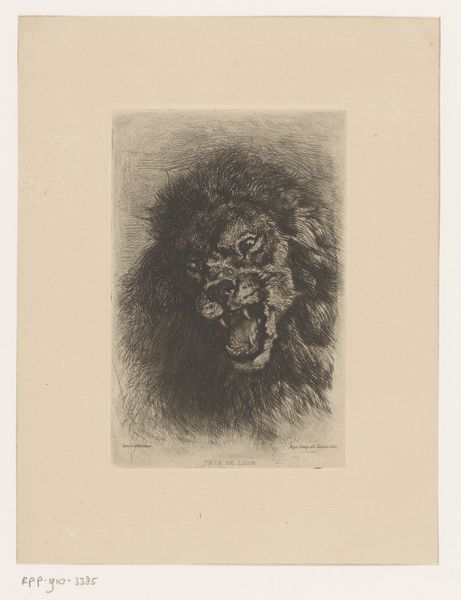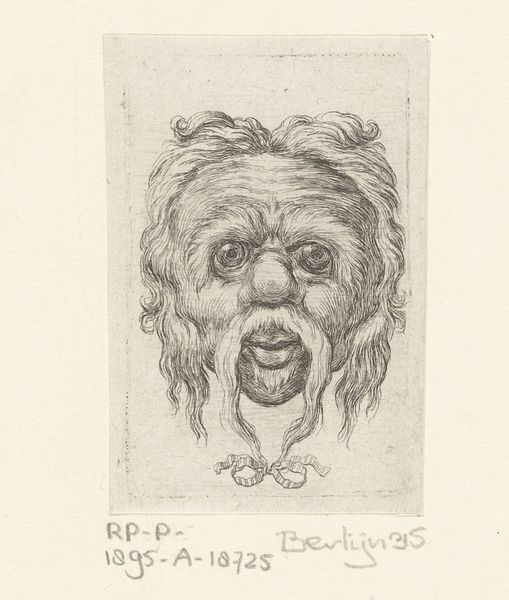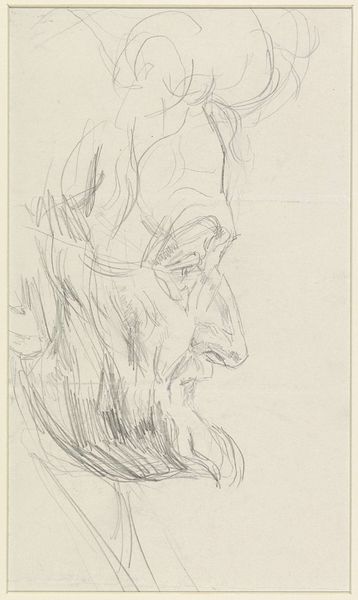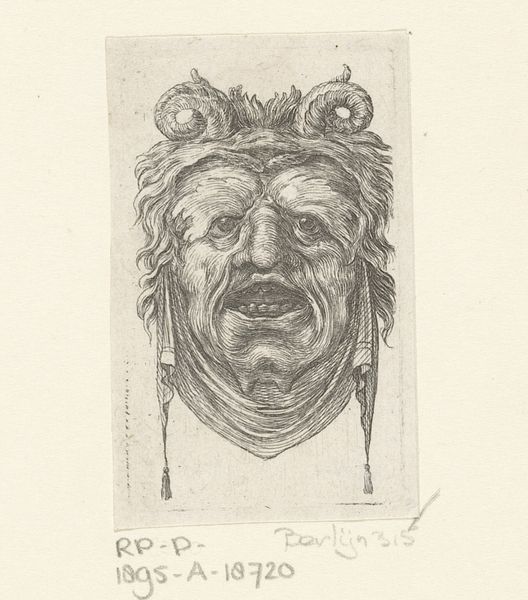
print, engraving
#
portrait
#
baroque
# print
#
old engraving style
#
figuration
#
personal sketchbook
#
sketchbook drawing
#
history-painting
#
engraving
Dimensions: height 58 mm, width 36 mm
Copyright: Rijks Museum: Open Domain
This small print, "Masker met laurierkrans," was made by François Chauveau in the 17th century, using the intaglio process of etching. The artist would have coated a copper plate with a waxy ground, then scratched an image into it with a fine needle. Acid then bites into the exposed metal, leaving behind delicate lines. In this case, those lines coalesce to create a satyr wearing a laurel wreath. The image feels both classical and grotesque, befitting its mythological subject. The magic of etching lies in its capacity for detail. Look closely, and you’ll notice the extraordinarily fine hatching used to render the satyr’s hair and beard. Consider the labor involved in creating this density of line-work. Ultimately, Chauveau’s print reminds us that even seemingly simple images can be the product of highly skilled work. Recognizing this helps us to broaden our understanding of art history to include a wider range of makers and processes.
Comments
No comments
Be the first to comment and join the conversation on the ultimate creative platform.
